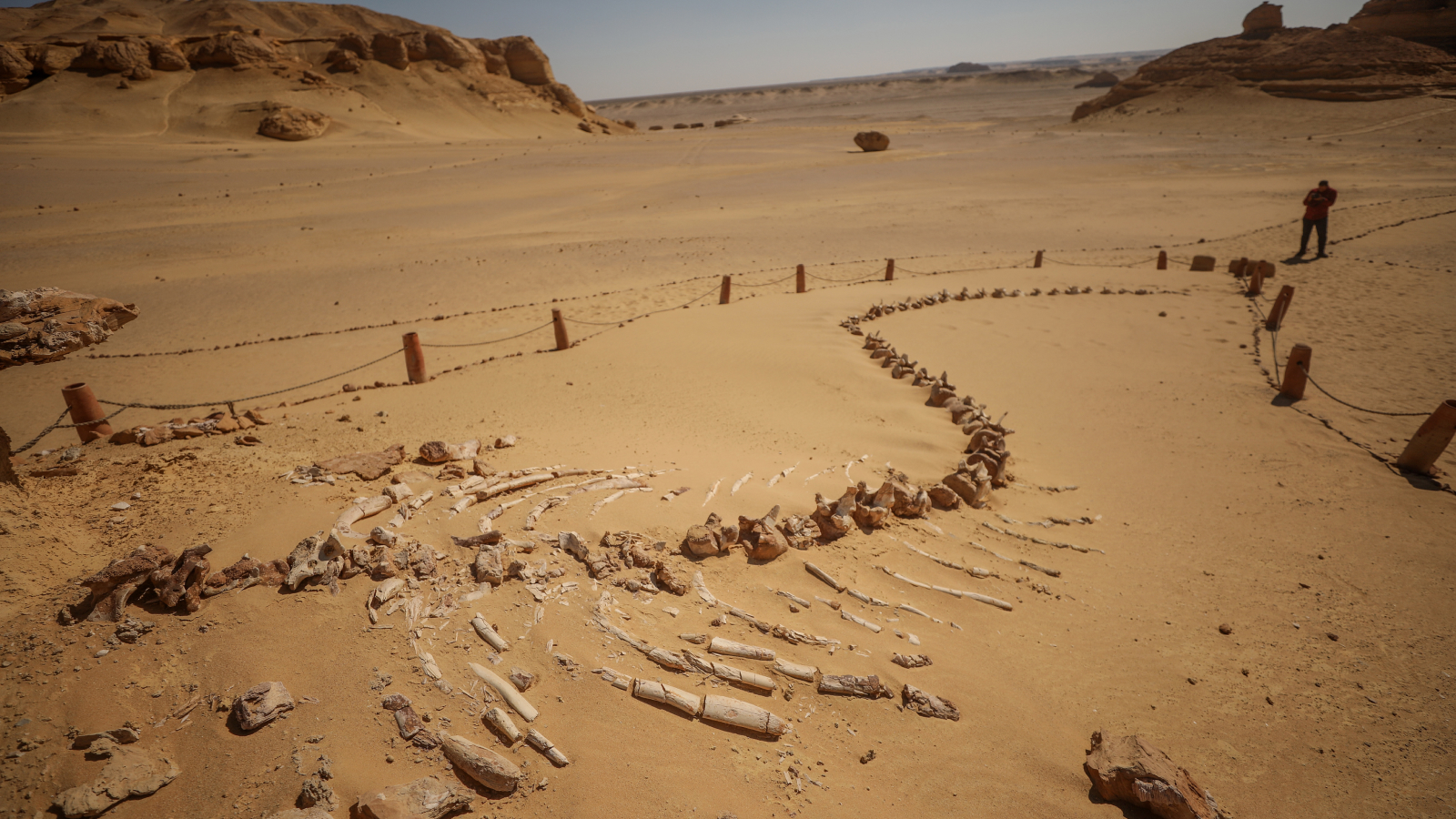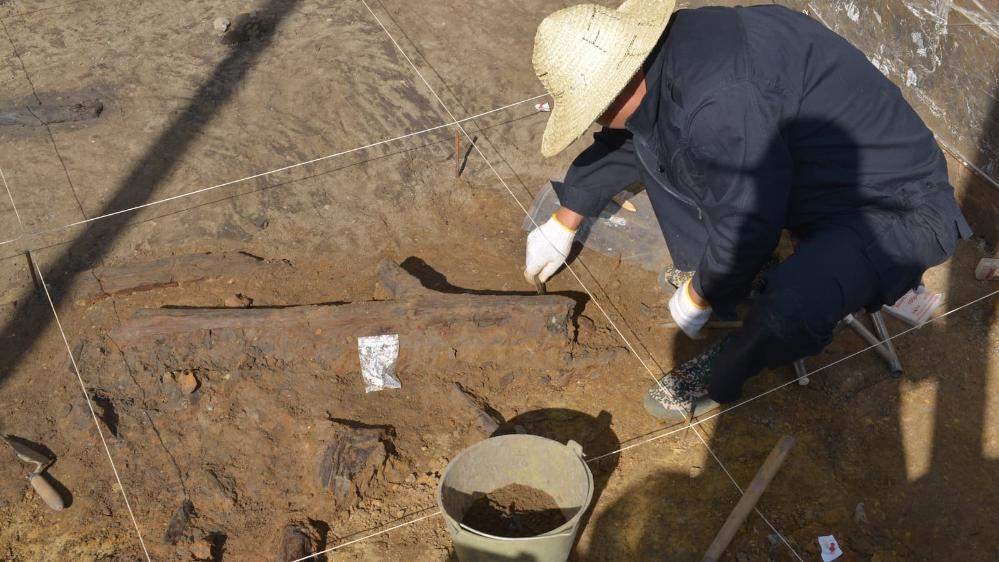QUICK FACTS
Name: Wadi Al-Hitan, which translates to “Valley of the Whales” or “Whale Valley”
Location: Western Desert of Egypt
Coordinates: 29.26755158061781, 30.02249562989221
Why it’s incredible: The valley holds hundreds of primitive whale skeletons, some of which have “feet.”
Whale Valley is a region of the Egyptian Sahara desert that is peppered with archaic whale skeletons, some of which have feet and toes preserved.
These skeletons and other marine fossils date to the late Eocene epoch (55.8 million to 33.9 million years ago), when present-day Egypt was submerged beneath the Tethys Ocean and whales had just evolved into sea creatures, according to UNESCO.
“These fossils represent one of the major stories of evolution: the emergence of the whale as an ocean-going mammal from a previous life as a land-based animal,” UNESCO’s website says.
Paleontologists have unearthed more than 400 ancient whale skeletons in Whale Valley since the beginning of the 20th century, according to a UNESCO video. The first such discovery, in 1902, uncovered a never-before-seen whale species called Basilosaurus isis (formerly Zeuglodon isis). This whale grew up to 60 feet (18 meters) long and probably dined on smaller whales, crushing their skulls before gulping them down, according to a 2019 study.
Evidence suggests B. isis “had a long snout and was armed with pointed incisors and sharp cheek teeth,” Manja Voss, a marine mammal expert at the Berlin Museum of Natural History and the lead author of the 2019 study, previously told Live Science.
Related: Eye of the Sahara: Mauritania’s giant rock dome that towers over the desert
Researchers have found scores of B. isis skeletons in Whale Valley, but in 1989, paleontologists made a remarkable discovery: A team from the University of Michigan and the Egyptian Geological Museum unearthed B. isis skeletons with hind limbs, feet and toes, according to a 2023 review article.
Modern-day whales lack hind limbs, but still have pelvic bones indicating that they once had them, according to the University of Hawaii. This means the fossils in Whale Valley are some of the oldest known archaeocetes, a group of mammals from the Eocene that later evolved into modern-day whales and dolphins, according to the 2023 review.
In 2005, paleontologists uncovered a stunningly preserved, near-complete B. isis skeleton, prompting UNESCO to list Whale Valley as a World Heritage site. Since then, plenty more fossils have emerged, including the remains of ancient Eocene turtles, bony fishes, sharks, rays, crocodiles, sea cows and shellfish, according to the review.
These fossils have stood the test of time thanks to the region’s arid climate since the Pliocene (5.3 million to 2.6 million years ago), according to UNESCO.
Whale Valley operates as an open-air museum, complete with a visitor center and easy access for tourists, but the site is strictly protected. Researchers continue to find new fossils and learn more about the geology of the area, according to the review.
Discover more incredible places, where we highlight the fantastic history and science behind some of the most dramatic landscapes on Earth.














